Step into Pilikuttuwa Raja Maha Viharaya, which is a hidden world where ancient caves, jungle paths, and centuries-old temples tell stories of Sri Lanka’s royal past.
A Peaceful Journey into History and Nature
If you love history, nature, and peaceful places, then Pilikuttuwa Raja Maha Viharaya in Gampaha District, Sri Lanka, is a must-visit. This ancient temple is about 3 km from the Yakkala – Kirindiwela main road. It’s a perfect spot for a morning hike, especially before the sun gets too hot.
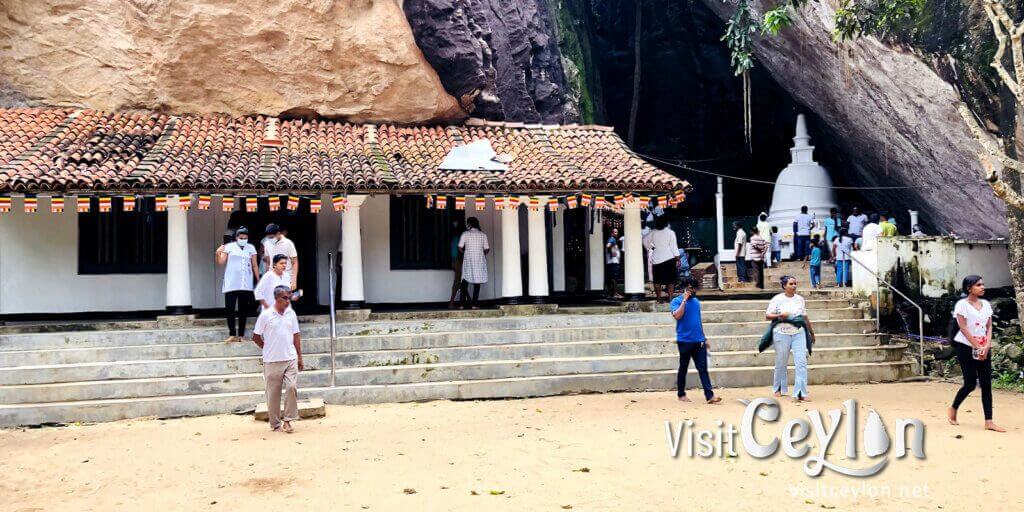
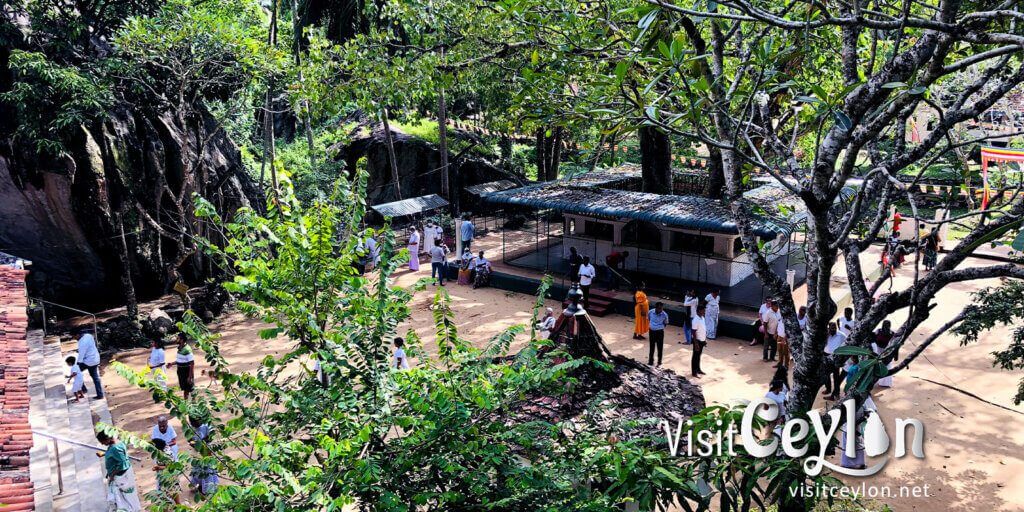
🌿 What Makes This Temple Special?
- The temple is surrounded by a large forest and a rocky mountain.
- There are over 100 ancient caves around the area.
- Visitors can enjoy amazing views from the top, including sights of Colombo city and even Nelum Kuluna.
You can climb to the top through a jungle path. The hike is not too hard, but there are two different paths:
- The longer path goes through cave inscriptions and is less slippery, even during rainy days.
- The shorter path is a bit steeper and might be more slippery.
⛔ Important Note:
You can only go to the top on Poya (Full Moon) days in Sri Lanka. Plan your trip accordingly.
🪷 Inside the Temple
The temple is in the middle of a green forest, making it a peaceful place for meditation. Here’s what you’ll find:
- Beautiful statues and artwork from different eras of Sri Lankan history
- Paintings of Portuguese soldiers (rare and historic)
- A wooden bridge near the lake with lovely views
- Many quiet caves for exploring and relaxing
You can also buy a small book for LKR 200 at the temple to learn more about its history.
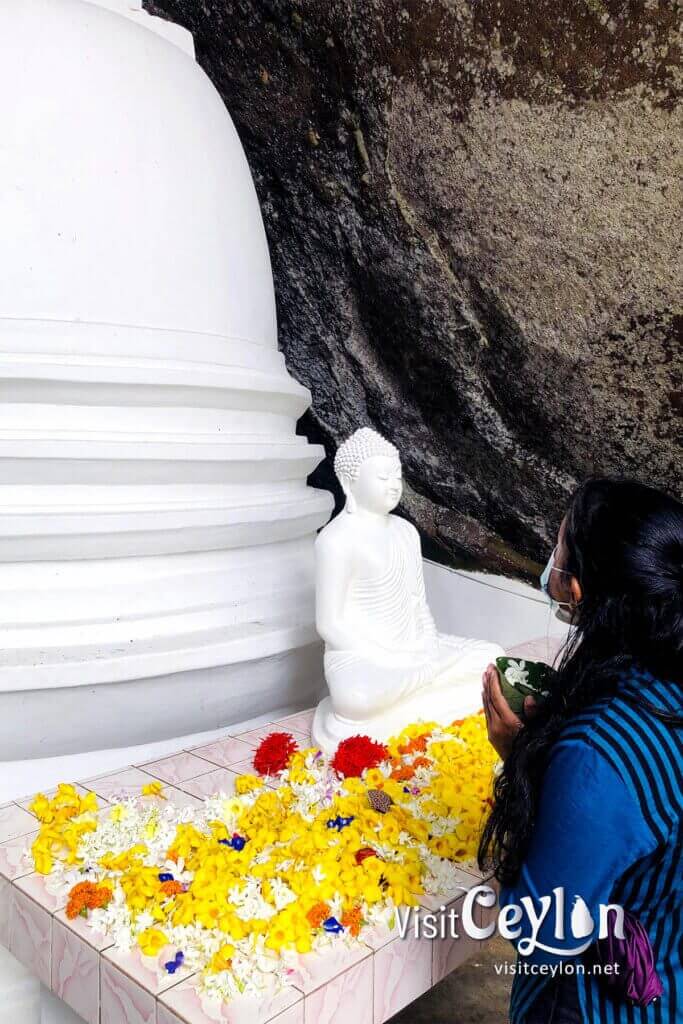
📜 A Short History
Pilikuttuwa Raja Maha Viharaya is believed to have been built during the Anuradhapura period by King Walagamba (also called Vattagamini Abhaya). When South Indian armies attacked, the King hid in this area for 14 years. He later built the temple as a sign of gratitude.
This temple was also a centre of Buddhist learning long ago. Even today, it holds important Buddha statues, a stupa, and many ancient relics.
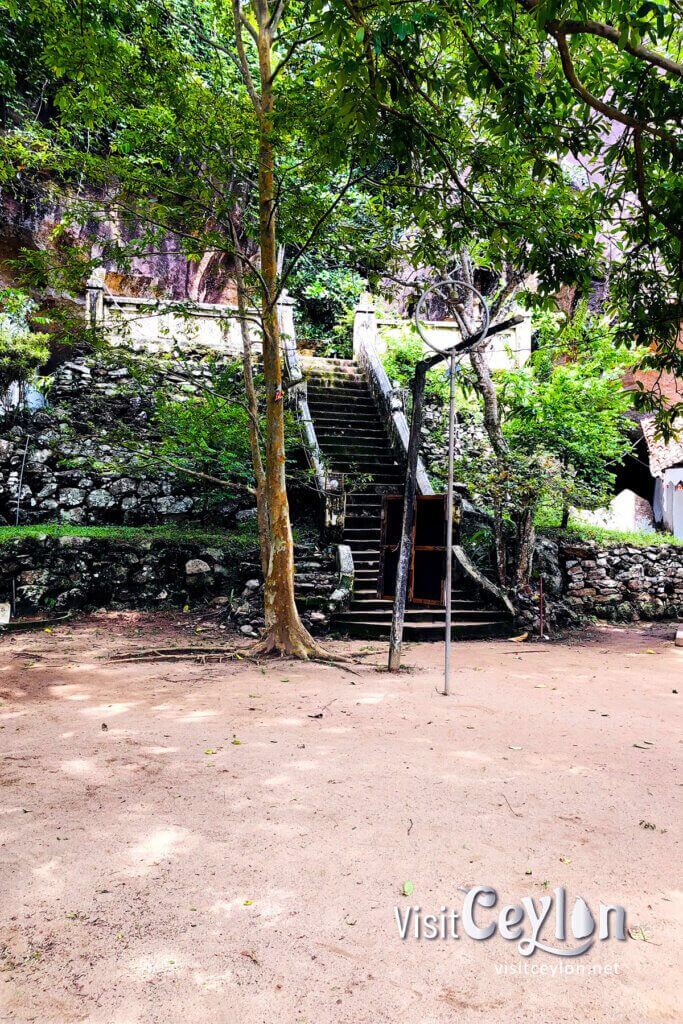
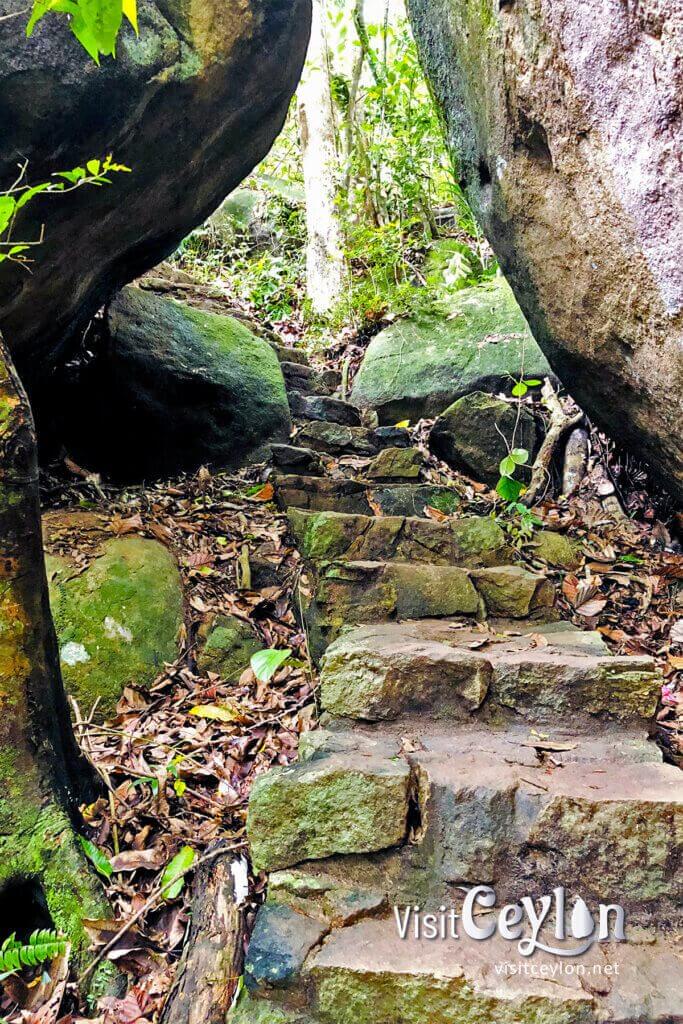
🧭 How to Get There
By Bus from Gampaha Town:
Take bus route 205 (Gampaha → Kirindiwela/Waturugama/Henegama/Buthpitiya).
Buy a ticket to Buthpitiya.
Ask the bus conductor to stop at “Buthholt” after Buthpitiya Maha Vidyalaya.
By Car:
Just follow the Google Map given below.
🥾 Jungle Hike to the Top of the Rock
To reach the top of the rock at Pilikuttuwa, there is a footpath that starts from near the temple. This path goes through a thick jungle. Most of the time, the path is clear and easy to follow. But in some places, it can be tricky. If you’re not careful, the path might lead you deep into the forest, and it’s easy to lose your way.
So, always stay on the main trail. If you’re unsure, wait and ask someone or go with a group. It’s best not to climb late in the evening, as it gets dark quickly, and finding your way back can be hard. Bring some water and wear good shoes, as the rocks and ground can be slippery after rain.
Climbing to the top takes some effort, but the view is amazing—worth every step!
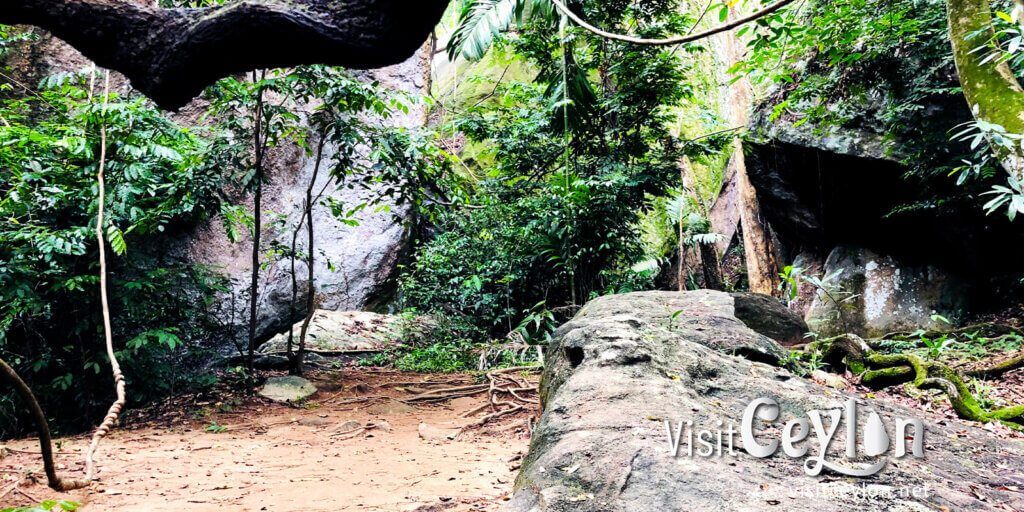
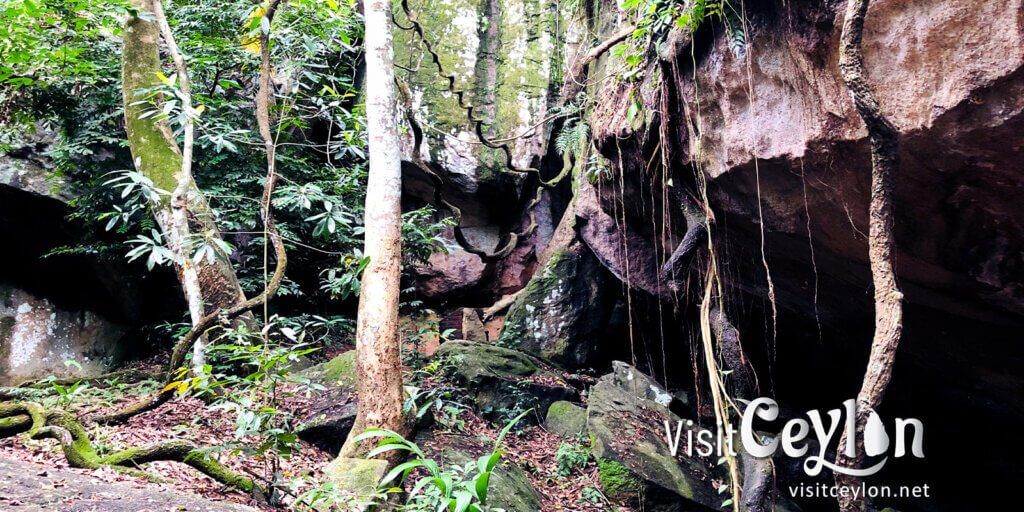
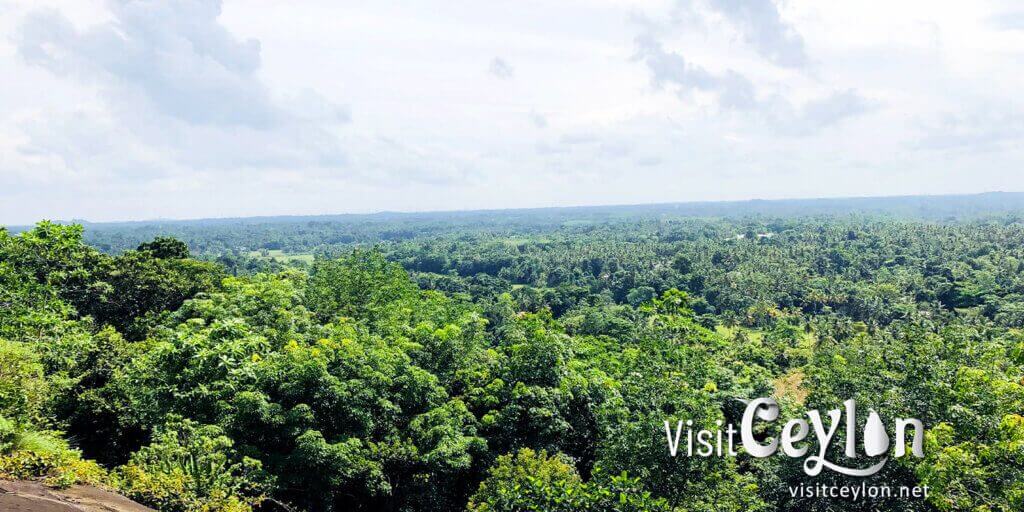
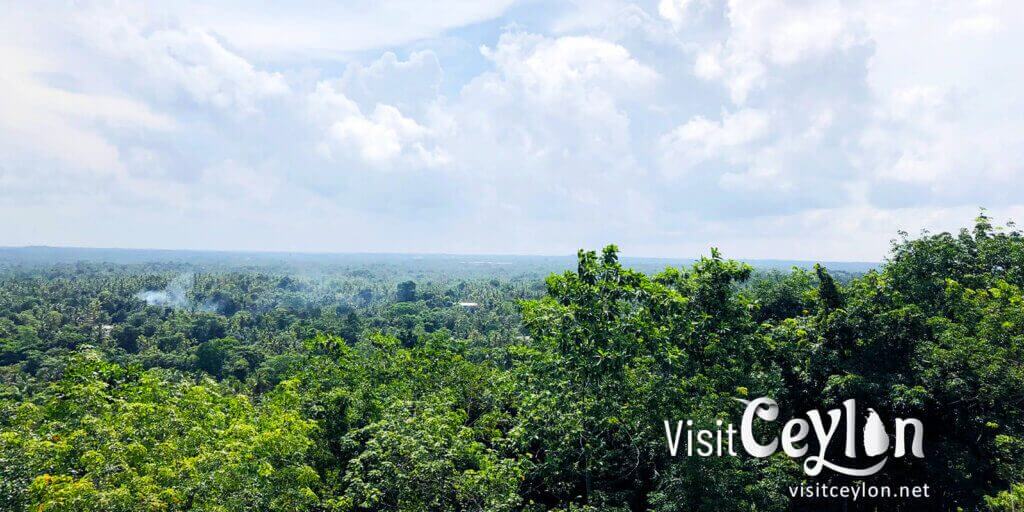
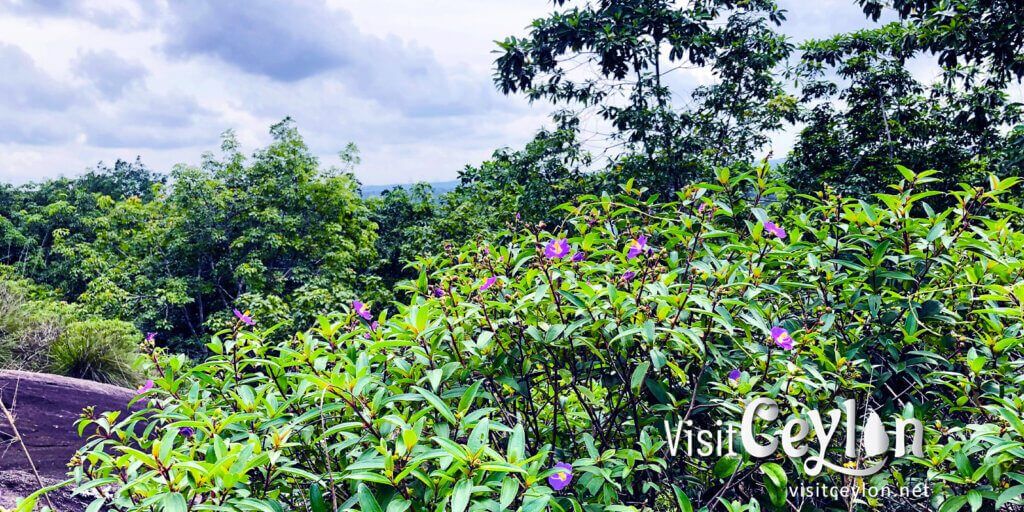
🧘 Tips for Your Visit
- Wear white, modest clothing (nothing revealing).
- Do not draw on rocks or write on trees.
- Do not drop plastic or litter in the forest.
- Stay quiet and respectful inside the temple.
- Climb early in the day, and avoid staying after dark.
- Be careful on slippery paths.
🙏 Final Thoughts
Pilikuttuwa Raja Maha Viharaya is more than just a temple. It’s a place where nature, history, and spirituality come together. Whether you’re climbing to enjoy the view or sitting quietly to meditate, this is a peaceful and unforgettable experience.
Visit to the Maligathanna Raja Maha Viharaya, that located near this temple.
Let’s help protect and preserve this ancient place so future generations can enjoy its beauty too.
📢 Feel free to share this post with friends who love travelling in Sri Lanka.
Thank you for reading at VisitCeylon.net 🌏
Location on Google map
Plan Your Adventure: Explore Our Interactive Map!
To make your journey even easier, check out our interactive map, where we’ve marked all these amazing destinations. Use it to plan your trip and discover more hidden gems in Sri Lanka!



